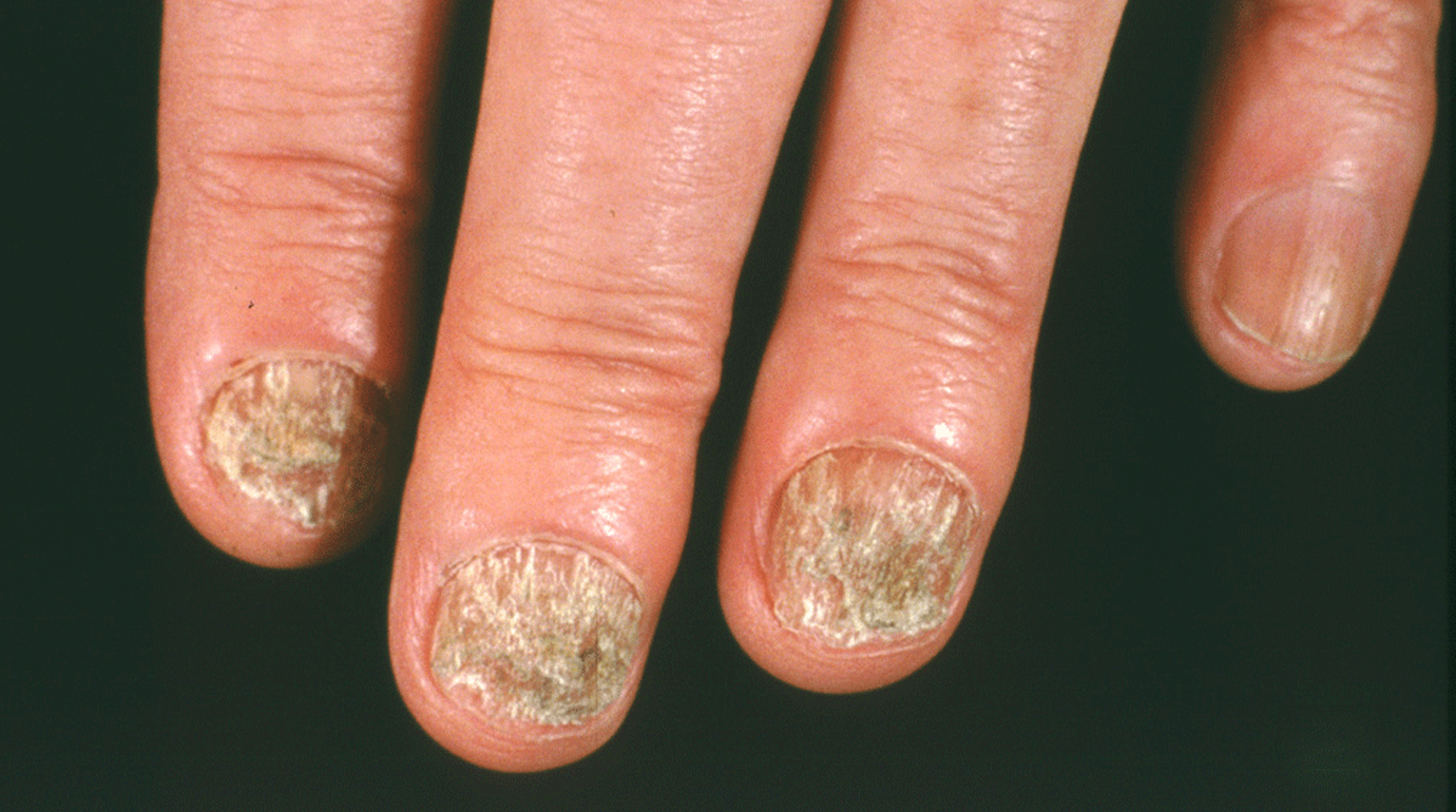
Fungal nail infection is the most common infection that affects the nails. It is a medical condition that begins as a white or yellow spot under the tip of your fingernail or toenail. As the fungal infection goes deeper, it may cause your nail to discolor, thicken and crumble at the edge. Onychomycosis, also called Tinea Unguium, is a fungal infection that affects either the fingernails or the toenails.
SymptomsSome of the signs and symptoms of a fungal nail infectionthat are visible are: Subungual Hyperkeratosis or the scaling found under the nail
Lateral Onychomycosis or the white and yellow streaks on the nail
Distal Onychomycosis or the crumbling corner or tip of the nail
Presence of flaking white surfaces on the nail, including the pits in the nail
Proximal Onychomycosis or the presence of yellow spots at the bottom of the nail
Nail loss
Some of the common signs of this infection are: Lifting of a distorted nail from the nail bed
A smell from the infected nail
A brittle and thickened nail
Diagnosis The doctor usually try to analyse the scraping of the nail under a microscope for signs of a fungus as there are chances of other infections that display similar symptoms of fungal nail infection. In some cases, the doctor might send the nail sample to the lab for a confirmed analysis and identification.
Treatment Doctors usually do not recommend the over-the-counter products for treating nail infections, as they are not effective. Instead, the doctors might prescribe oral antifungal medications, topical ointments, and alternative therapies.
Some of the oral medications that doctors usually prescribe for nail fungus infections include:
- Terbinafine (Lamisil)
- Itraconazole (Sporanox)
- Fluconazole (Diflucan)
- Griseofulvin (Gris-Peg)
There are also antifungal nail laquer that is applied onto the affected nail like nail polish. They might have to be used for a couple of months to a year depending on the type of fungus causing the infection and its extent.
It is difficult to get rid of the fungal infection completely and in mose cases, they return. In some extreme cases, the doctor will opt to remove the entire nail.
Prevention Some of the preventive measures that will help keep then nail infection in check are: Using antifungal sprays or powders regularlyWashing your hands after touching infected nails
Dry your feet well after showering, especially between your toes
Wear sweat-absorbing socks or change your socks throughout the day.
Avoiding walking barefoot in public places
Moisturize your nails after washing.
Choose shoes made of materials that breathe.
Give up nail polish and artificial nails.
Risks A severe case of nail fungus may cause permanent damage to your nails. If you have diabetes, you may have reduced blood circulation and nerve supply in your feet. There is a greater risk of a bacterial skin infection (cellulitis). So any relatively minor injury to your feet, including a nail fungal infection, can lead to a more serious complication.


